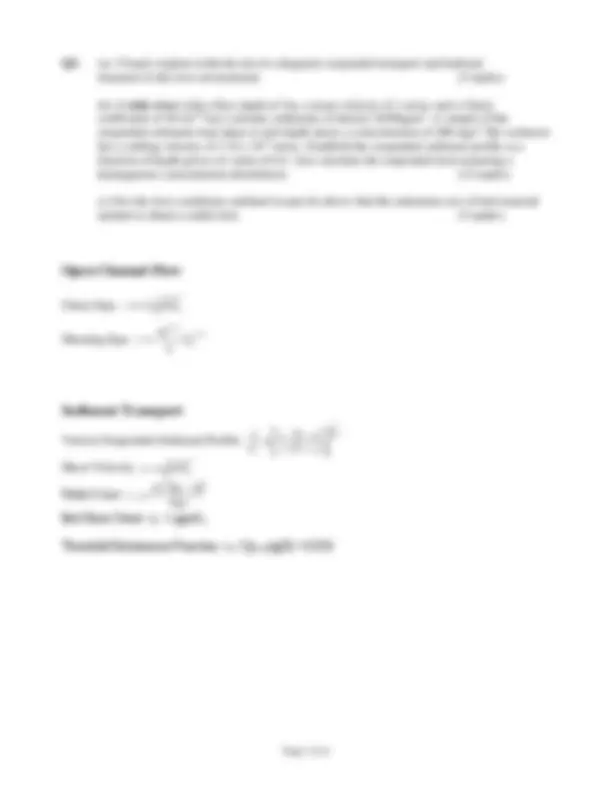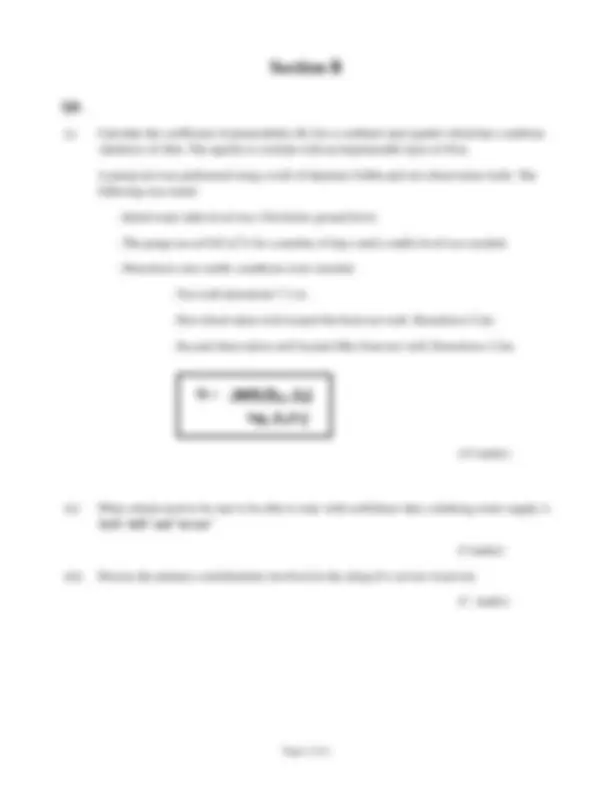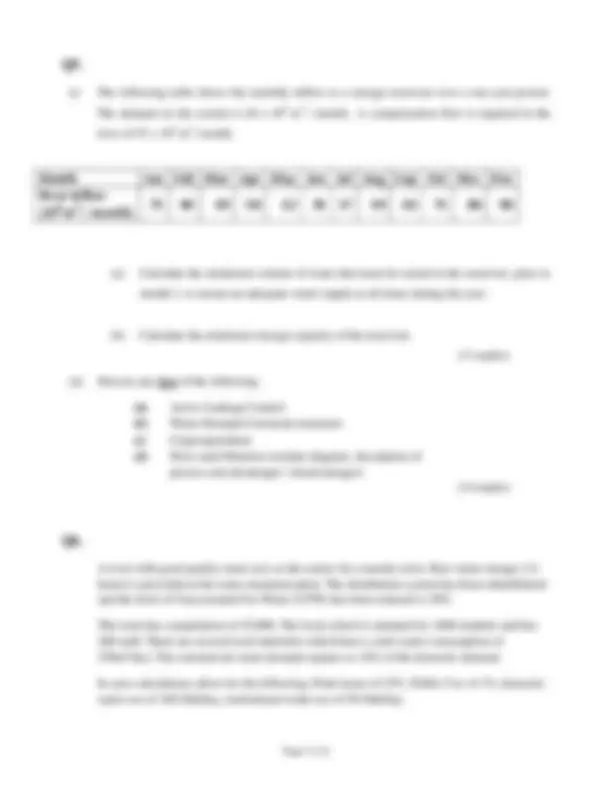





Study with the several resources on Docsity

Earn points by helping other students or get them with a premium plan


Prepare for your exams
Study with the several resources on Docsity

Earn points to download
Earn points by helping other students or get them with a premium plan
Community
Ask the community for help and clear up your study doubts
Discover the best universities in your country according to Docsity users
Free resources
Download our free guides on studying techniques, anxiety management strategies, and thesis advice from Docsity tutors
An old examination paper from the water engineering module (civl8023) of the beng (hons) in structural engineering programme at cork institute of technology. The paper includes questions on topics such as open channel flow, water surface profiles, river water level measurement, dilution gauging, and suspended sediment transport. Students were required to answer questions from both section a and section b within 2 hours during the winter 2012 semester.
Typology: Exams
1 / 6

This page cannot be seen from the preview
Don't miss anything!




Semester 1 Examinations 2012/
Module Code: CIVL
School: Building & Civil Engineering
Programme Title: BEng (Hons) in Structural Engineering – Year 3 Certificate in Environmental & Energy Engineering
Programme Code: CSTRU_8_Y EENEN_8_Y
External Examiner(s): Dr Roger West, Mr Jack O’ Leary Internal Examiner(s): Dr J. Harrington, Ms D. Barnett
Instructions: Answer Two Questions from Section A and Two Questions from Section B.
Duration: 2 Hours
Sitting: Winter 2012
Requirements for this examination:
Note to Candidates: Please check the Programme Title and the Module Title to ensure that you have received the correct examination paper. If in doubt please contact an Invigilator.
Q1. (a) An open channel of trapezoidal x-section cut in earth has a bottom width of 6 m, side
slopes 2 horizontal to 1 vertical, and a bed slope of 1 in 1000. Determine the mean velocity and the discharge for uniform flow when the depth of water at the centre is 2.4 m. Use Manning’s Formula with n = 0.025. What would be the depth of water in the channel to pass twice this volume per second (Q 2 ) if both the slope and the value of n were unaltered? (16 Marks)
(b) Outline the standard approach taken to the classification of water surface profiles.
Sketch the water surface profile for the following hydraulic conditions: (i) A section of channel upstream of a bridge structure constructed in the cross-section of the river channel. (ii) Flow over the spillway of a dam onto a horizontal apron. Note : Please clearly identify any assumptions that you make. (9 marks)
Q2. (a) Discuss
(i) River Water Level Measurement (5 marks) (ii) Dilution Gauging (5 marks) (iii) Environmentally Sound River Engineering (5 marks)
(b) A river with a low flow of 3 m^3 /sec and 1.0 mg/l BOD level receives a discharge from a local wastewater treatment plant with a flow rate of 0.25 m^3 /sec. This treatment plant was originally designed in the 1980s to meet the old ‘20/30’ standard. Determine the downstream BOD level assuming that the plant still meets its original design specification. Clearly state the assumptions made in this analysis. Comment on the water quality conditions upstream and downstream of the discharge. (7 marks) (c) Outline the Water Quality Classification Approach applied by the Environmental Protection Agency (EPA) to rivers in Ireland. (3 marks)
(i) Calculate the coefficient of permeability (K) for a confined sand aquifer which has a uniform thickness of 20m. The aquifer is overlain with an impermeable layer of 45m.
A pump test was performed using a well of diameter 0.60m and two observation wells. The following was noted:
(15 marks)
(ii) What criteria need to be met to be able to state with confidence that a drinking water supply is both ‘safe’ and ‘secure’
(5 marks)
(iii) Discuss the primary considerations involved in the siting of a service reservoir.
(5 marks)
(i) The following table shows the monthly inflow to a storage reservoir over a one year period. The demand on the system is 26 x 10^5 m^3 / month. A compensation flow is required in the river of 35 x 10^5 m^3 / month.
(a) Calculate the minimum volume of water that must be stored in the reservoir, prior to month 1, to ensure an adequate water supply at all times during the year.
(b) Calculate the minimum storage capacity of the reservoir. (11 marks)
(ii) Discuss any two of the following:
(a) Active Leakage Control (b) Water Demand Constraint measures (c) Cryptosporidium (d) Slow sand filtration (include diagram, description of process and advantages / disadvantages) (14 marks)
A river with good quality water acts as the source for a nearby town. Raw water storage ( hours) is provided at the water treatment plant. The distribution system has been rehabilitated and the level of Unaccounted For Water (UFW) has been reduced to 30%.
The town has a population of 25,000. The local school is attended by 1800 students and has 200 staff. There are several local industries which have a total water consumption of 550m^3 /day. The commercial water demand equates to 18% of the domestic demand.
In your calculations allow for the following: Peak factor of 25%, Public Use of 1%, domestic water use of 160 l/hd/day, institutional water use of 50 l/hd/day.